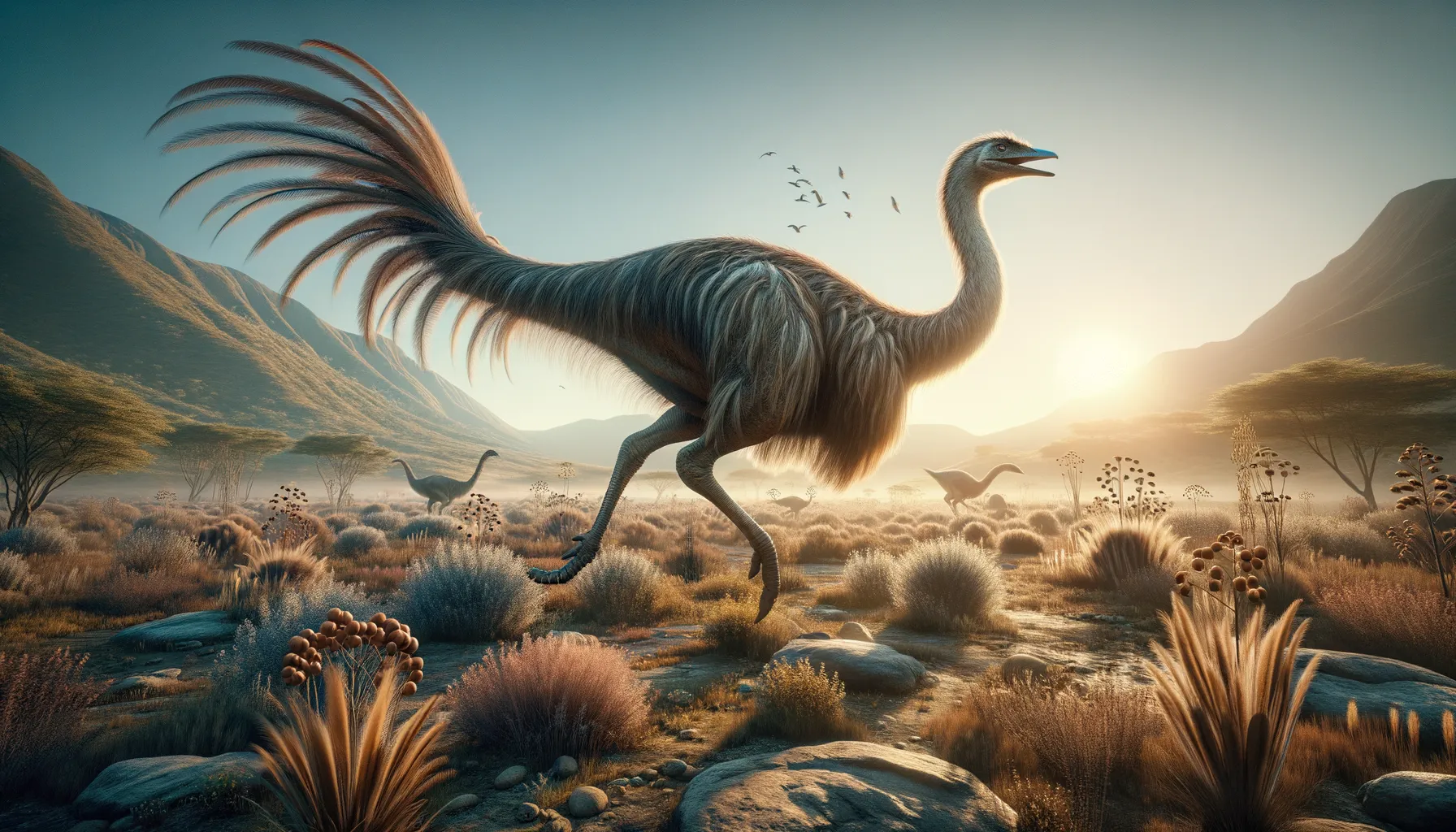
Struthiomimus
A speedy giant with ostrich-like grace!
Period
Cretaceous
Length
Measured around 4 meters in length.
Height
Stood about 1.5 meters tall at the hips.
Weight
Weighed approximately 150 kg.
Struthiomimus was a swift, ostrich-like dinosaur that lived during the late Cretaceous period. Its name means 'ostrich mimic' due to its resemblance to modern-day ostriches. With long legs and a lightweight body, this dinosaur was built for speed. Struthiomimus had a beak and likely had feather-like coverings, offering insight into the link between dinosaurs and birds.
Diet
Struthiomimus was likely omnivorous, eating a varied diet. Its beak suggests it could have fed on plants, insects, and small animals.
Hunting
It likely used its speed to catch small prey or escape predators. Struthiomimus might have foraged independently, pecking at ground vegetation and small insects.
Environmental challenges
Struthiomimus faced challenges such as avoiding predators, likely larger carnivorous dinosaurs. Climate variations would affect habitat availability and food supply. Competition for resources with other herbivores and omnivores also posed significant challenges.
Speed
Capable of running up to 50-60 km/h.
Lifespan
Estimated to have lived around 10-20 years.
First discovery
Described by Othniel Charles Marsh in 1890.
Fun Facts
- Struthiomimus was a dinosaur that lived about 75 million years ago during the Late Cretaceous period.
- Its name means 'ostrich mimic' because it resembled modern flightless birds like ostriches with its long legs and neck.
- Unlike many other dinosaurs, Struthiomimus was likely an omnivore, meaning it ate both plants and small animals.
- This dinosaur was a fast runner, with some estimates suggesting it could reach speeds of over 50 kilometers per hour.
- Struthiomimus had large eyes, which might have helped it spot predators or prey from a distance.
- It is believed that Struthiomimus had feathers, adding to its bird-like appearance.
- Fossils of Struthiomimus have been found in North America, particularly in places like Alberta, Canada.
Growth and Development
Struthiomimus hatched from eggs and grew rapidly, likely reaching full size in a few years. Juveniles would have needed protection or concealment to survive in a predator-rich environment. As they matured, their increased size and speed would have improved their survival odds.
Habitat
Struthiomimus inhabited areas resembling modern plains and woodlands. These environments offered rich plant life and plenty of open space for running. Water sources like rivers would have been essential for sustenance.
Interaction with other species
Struthiomimus likely avoided large carnivorous dinosaurs due to its smaller size. It may have shared its habitat with other herbivorous or omnivorous species, competing for resources. Instinctual behaviors likely helped it identify threats and potential food sources in its ecosystem.
Natural lifespan
Struthiomimus likely lived naturally for about 10 to 20 years.
Reproduction
Struthiomimus reproduced by laying eggs, similar to modern birds. Nests might have been built on the ground, where the female laid clutches of eggs. Parental care levels are uncertain, but young likely required some concealment from predators.
Social behaviour
Struthiomimus might have lived in small groups, offering safety in numbers. Group living could aid in spotting predators and sharing foraging information. However, it may not have exhibited complex social behaviors seen in some other species.
Fossil locations
Fossils have been primarily found in North America, particularly in Alberta, Canada, and the United States. These discoveries have helped scientists better understand the dinosaur's ecology and biology. Ongoing excavation efforts continue to uncover more about its lifestyle and environment.
